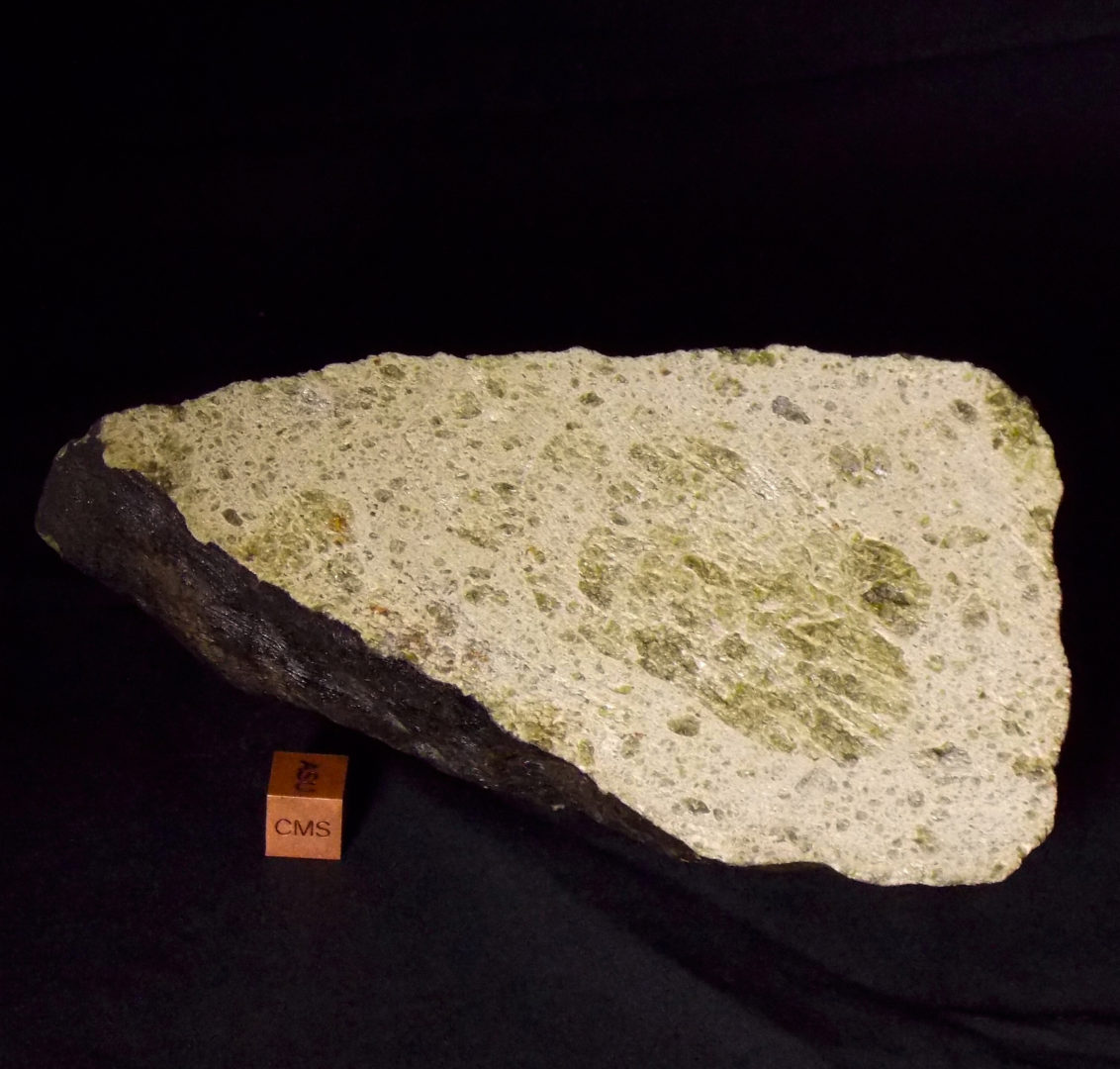Johnstown
The Johnstown meteorite fell the afternoon of July 6, 1924, in Weld County, Colorado.
Johnstown is an achondrite (meaning that it formed on a differentiated planetary body, and does not contain chondrules) from the diogenite group.
Part of the HED (Howardites, Eucrites and Diogenites) group of achondrites, diogenites are believed to originate in the crust of Asteroid 4-Vesta. According to radioisotope dating, the HED achondrites crystallized between 4.43 and 4.55 billion years ago. Diogenites are plutonic igneous rocks that form deep in the crust and cool very slowly, resulting in large crystals. They are named for the ancient Greek philosopher Diogenes, who was the first to suggest that meteorites were not terrestrial rocks, and actually originated in space.
 Photo by L. Garvie © ASU/CMS.
Photo by L. Garvie © ASU/CMS.
In 2007, NASA launched the Dawn mission to study Vesta and the dwarf planet Ceres, and to provide insight into the formation and evolution of solid bodies in the early Solar System using a visible camera, a visible and infrared mapping spectrometer, and a gamma ray and neutron spectrometer. The extremely detailed images Dawn captured of Vesta's surface enabled the compilation of high-resolution global geological and tectonic maps of Vesta, published in the journal Icarus by a scientific team led by ASU School of Earth and Space Exploration Associate Research Professor Dr. David Williams.
Read the Meteoritical Bulletin entry for Johnstown, here!